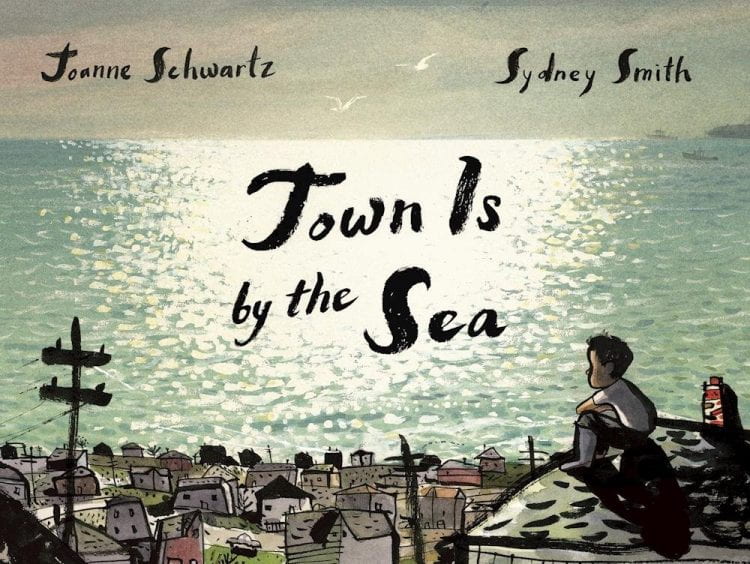Written by Joanne Schwartz
Illustrated by Sydney Smith
Reviewed by Lindsey Smith
It’s hard to find good children’s books about working class people. Sí Se Puede by Diana Cohn and A Chair for My Mother by Vera Williams come to mind of course, but they’re lonely exemplars in a sparse field.
Town Is by the Sea tells the tranquil, quotidien story of a young boy in Cape Breton whose father is a miner. The boy’s father going to work in the mines is a part of the story, but it’s not the only focus. The boy eats breakfast, goes to the store, plays with his friend, admires the sea, and more. The story is observational about a white working class life in the 1950s, rather than didactic.
Smith’s illustrations delicately fill out the working class element of the story. Somehow, his neutral tones manage to capture the oppressive darkness of the mines, the glamor of the sea, and many things in between. I was most struck by the illustration below, which shows a duplex painted different colors on each side. It may seem like a trivial detail, but that’s what my house looks like, and I realized when I saw the picture how rarely houses like mine appear in children’s books. I’m sure there are students who would think the same thing.

Town Is by the Sea is a versatile story. It could be used in a kindergarten unit on jobs, a study in artistic perspective, a unit on geography, and much more. Of course, any discussion on working class families should include families of color and be explicit about capitalism’s role in oppressing workers, but Town Is by the Sea is a valuable addition to a classroom library both on artistic merit and content.
I’m curious to hear what readers make of the last few lines of this book, as well. As the young boy goes to bed, he thinks “about the bright days of summer and the dark tunnels underground.” Then, the boy says, “One day, it will be my turn. I’m a miner’s son. In my town, that’s the way it goes.” The last two sentences appear over a dark image of the seaside at night.
Joanne Schwartz’s author’s note in the back of the book sheds some light on this haunting ending. She includes an excerpt from Boys in the Pits that reads, “For most boys raised within these communities, the day arrived when they too surrendered their childhood to it.” She also explains that the story takes place in the 1950s. Although it made me uncomfortable, the final lines of Town Is by the Sea do speak to a historic truth. How would you address the end of the book in your classroom?
